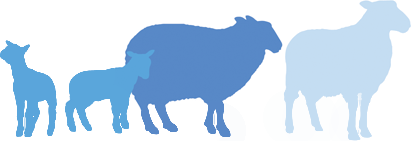The Wonders of Wool
Wool is 100% natural, 100% renewable, 100% sustainable and 100% biodegradable. It is unlike any other material on the planet and has a myriad of uses – from fine clothing and carpets, to insulation and packaging.
Wool used to be the primary reason for keeping sheep in the UK and was the foundation of an economic boom in the 13th century. That’s why you see pubs called The Fleece, The Lamb and The Drovers Arms, terraces of Weavers’ Cottages and grand Mill Houses in many towns and villages. To this day, the Lord Speaker of the House of Lords sits on a Woolsack – a tradition that dates to the reign of Edward III, when the wool trade was one of the most important parts of the economy.
The rise of synthetic fibres means the priority now on most farms is producing meat rather than wool, but the UK still has an output of more than 22,000 tonnes of wool each year. This wool is a natural product of the sheep’s lifecycle, produced using little more than grass and herbage. And because of the plant material consumed by sheep, wool is actually a short-term store of carbon – meaning it helps take carbon out of the atmosphere. It is predicted that up to half the weight of a fleece is organic carbon. When you consider how harmonious sheep are with the environment anyway, thriving in areas that usually cannot support crops or other types of food production, wool really is the most sustainable material there is.
Most sheep are shorn once per year, which is essential for animal welfare to prevent heat stress and problems caused by external parasites such as flies. Shearing is done by skilled professionals following an industry code of practice . Once removed, fleeces are packed into woolsacks on the farm and sent off for washing and processing. Farmers are continually frustrated by how little money they are paid for these fleeces, often remembering how the annual wool cheque used to pay a year’s rent or buy a new tractor for their farming forefathers, whereas now it brings in less that it costs to shear them. Innovation in the supply chain and global recognition of wool’s environmental credentials will hopefully reverse this in time.
Here are just a few things that wonderful wool can be used for.
- Home insulation. Wool is great for keeping homes warm, and firefighters prefer it because it is flame retardant and produces less smoke and toxic fumes in the unfortunate event of a fire.
- Hard-wearing carpets. Wool carpets and rugs look better for longer than those made with synthetic fibres. It’s because the natural crimp in wool offers robustness and elasticity, so carpets ‘bounce-back’ when you walk on them, lasting for many years – if not decades.
- Soundproofing. Having noticed that rooms with wool carpeting have improved acoustic performance, as the carpet acts as a sound absorber and dampens any impact noise, strides are being made in soundproofing technology. It works because wool has visco-elastic properties, which converts sound energy in heat, therefore dissipating noise.
- Beds, duvets, pillows and blankets. Wool bedding creates a perfect climate for sleep, and wool’s naturally hypoallergenic and antibacterial properties make for a great night’s sleep.
- Baby comfort. Wool will keep babies cosy and warm, but not too hot as it cleverly changes to their needs. The same is true for adults too.
- Crafting. Be it for knitting or crochet, needle felting or wet felting, wool is a firm favourite with crafters of all ages.
- Wool from certain breeds of sheep is more suitable for clothing than others. Fleeces from UK sheep are most suitable for tweed and heavy-duty textiles, or for mixing with other fibres to create a mixed product. Don’t write wool off as too itchy to wear – there are loads of fashion options out there, as it feels great to wear something with an environmentally sustainable message.
Insulate with it. Soundproof with it. Wear it. Walk on it. Wrap things with it. NSA believes the world’s oldest renewable fibre is also the most versatile and modern.



